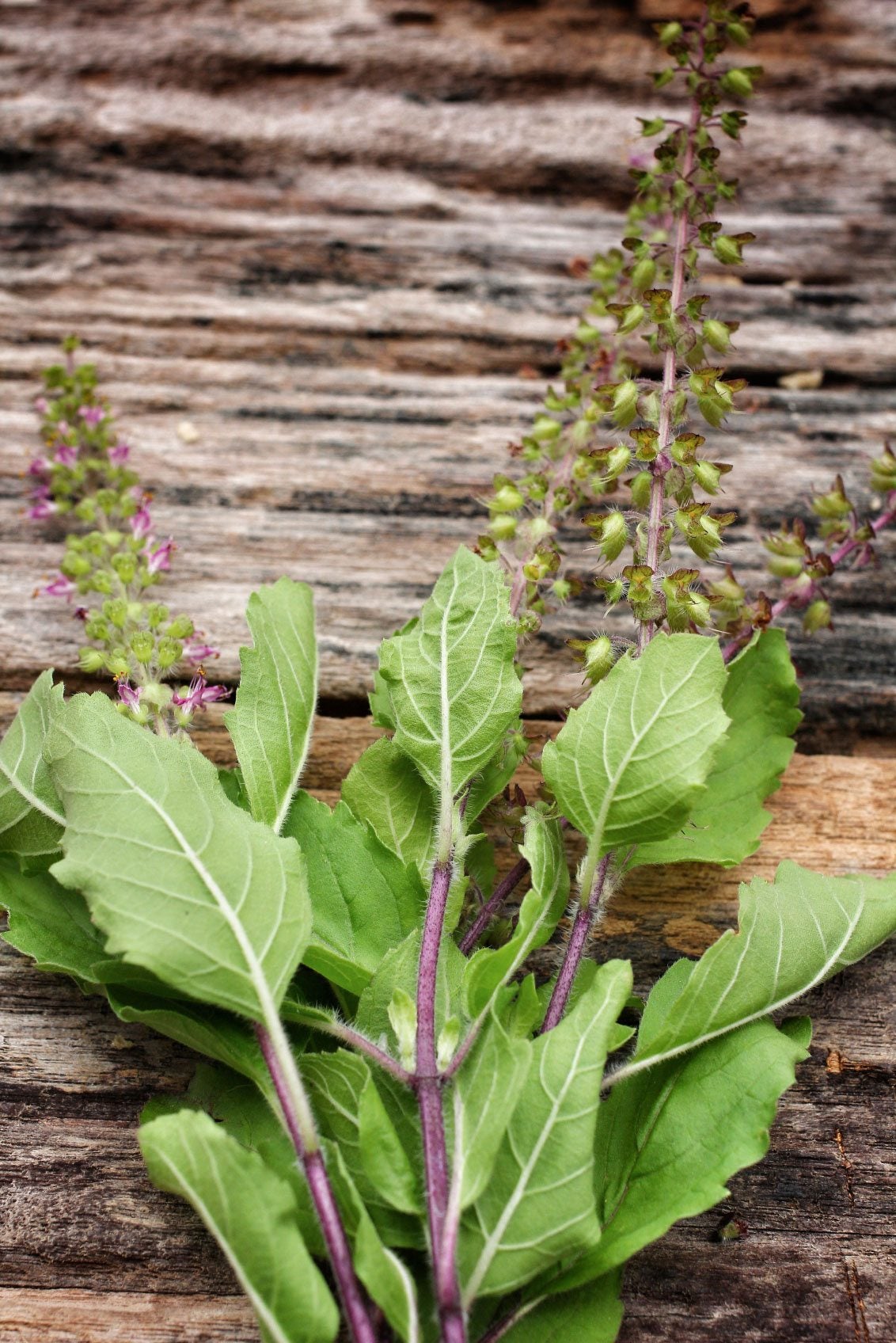Basil Seed Collecting: Tips For Harvesting Basil Seeds


You know it's summer when fresh, ripe tomato and basil salad graces your dinner table. Basil is one of the warm season herbs that have a distinctive scent and flavor. Harvesting basil seeds from a favorite variety will ensure you get that same taste and cultivar. Saving basil seed is an easy, economical way to grow basil year after year. Read on for some tips on how to harvest basil seeds and ways to save basil seed.
How to Harvest Basil Seeds
Basil plants are pollinated by small flying insects. The different varieties will cross pollinate, so it is important to isolate a favorite cultivar by at least 150 feet (45.5 m.). This will prevent another variety from polluting your strain. The seeds are contained in the spent flower head. Use a fine colander for basil seed collecting, as the black seeds are very tiny. Cut off the brown and spent flower heads and let them dry for a few days in a warm, dry location. Crush the heads over the colander and pick out the old petals and any chaff. Basil seed collecting is that simple. You can also put the dried seed heads into a paper bag and shake it, then crush the bag with a rolling pin, tip the pulverized plant material into a shallow tray and blow out the chaff. You now have home-harvested basil seed which will be of the parent plant's strain, provided they didn't cross pollinate.
How Long Do Basil Seeds Keep?
Once you have the seeds, you need to store them properly. But how long do basil seeds keep? If they are properly stored, basil seeds are viable for up to five years. Label and date your seeds and rotate them so the oldest are used up first. Seeds that are completely dry and kept in a dry, dark location should be viable for years after basil seed collecting.
Storing Basil Seed
Place the dried seeds in a plastic bag or glass jar with a sealable lid. Put the bag or jar in the freezer for a couple of days to kill any insect pests that may still be in the plant material. Ensure there is no air in the container and store the seed in a cool, dark place. Seed viability will be affected if the seeds are exposed to more than minimal light. Label and catalogue your varieties and get ready for a bumper crop of basil. Sow the seed in flats in early spring with just a dusting of potting soil over the tiny seeds. Keep moderately moist and transplant after the first two sets of true leaves appear. Harvesting basil seeds is a quick way to preserve the delicate flavors of the herb and ensure there is a plentiful supply of pesto.
Sign up for the Gardening Know How newsletter today and receive a free copy of our e-book "How to Grow Delicious Tomatoes".

Bonnie Grant is a professional landscaper with a Certification in Urban Gardening. She has been gardening and writing for 15 years. A former professional chef, she has a passion for edible landscaping.